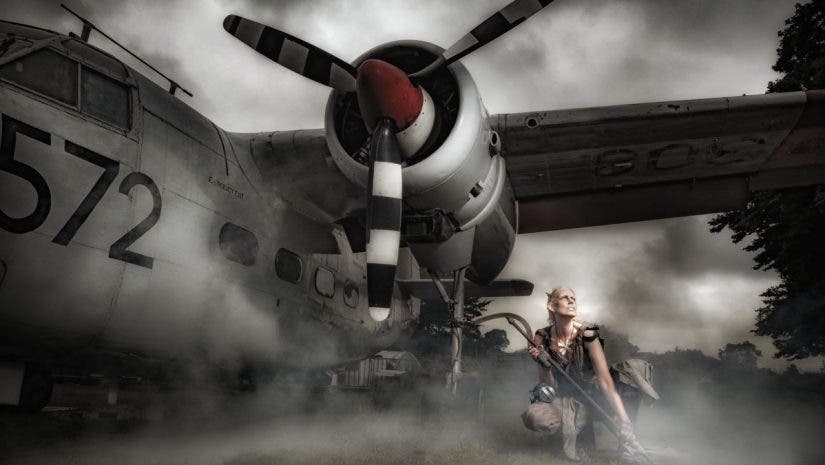Being asked to choose my favorite lens is like asking someone to choose their favorite shoes. The choice will always be influenced by the job at hand (or on foot, in the case of shoes). However, even a swift look through my imaging EXIF data will show that there’s one lens that I return to repeatedly, the M.Zuiko Digital ED 12-40mm f/2.8 Pro II lens for the OM SYSTEM.
The OM SYSTEM M.Zuiko 12-40mm F2.8 PRO II is by far the best lens I’ve ever owned. I use it almost exclusively when filming a video, or photography stills, its 12-40mm range (equivalent to 24-80mm on a full-frame camera) is the perfect balance for my studio and location portraits.
Love at First Shot
Maybe I love it just because it was my first ever Olympus lens. Slightly updated by OM SYSTEM, the M.Zuiko 12-40mm lens is beautifully compact, considering it has a wide-open aperture of f/2.8 at all focal lengths. It’s also lightweight, which is good news as I’m often using it for extended periods. Plus, when it’s not in use, I carry it around in my pocket, although, for safety reasons, that’s a terrible idea!
Most of my work tends to be in my small home studio. It’s warm and dry all year round, but, given that I live in the UK, on the occasions I step outside, I almost always appreciate the weather sealing on this lens. The front element on the newer OM SYSTEM version of this lens has a hydrophobic coating, so keeping it clean and free from smears is easy.
For shooting video, I love that the 12-40mm can focus surprisingly close and has a smooth manual focus ring. There is a little bit of lens breathing, where the front element moves as you zoom, but not much, and it never caused any issues when I attached it to my DJI RSC 2 Gimbal Stabilizer.

M.Zuiko 12-40mm F2.8 is a Champ in Tight Spaces
If you’re not used to Micro 4/3 lenses, the wide 12mm end of the lens might sound crazy wide. If 35mm (full frame) is your normal, then a 12mm lens on my camera essentially gives me the same field of view as a 24mm lens would on yours.
The secret of any wide-angle portrait is to back up as much as possible. The distorted perspective we associate with wide-angle photos is often because the lens allows you to get close to your subject. Anything close to your lens will appear bigger, so if you back up and don’t include a foreground (such as shooting a 2/3 length portrait) the wide end of this lens looks great.
Of course, I often want to include lots of scenery on location. Suddenly, a wide-angle lens is an obvious choice, and occasionally, I’ll deliberately include a foreground with all of its distortion just because I can.
For video work, especially gimbal-based video work, I rarely go over 20mm (40mm in full frame terms), so once again, the 12-40mm is a dream to work with, a 62mm filter size, the variable ND filter I use for shooting video didn’t break the bank either.

M.Zuiko 12-40mm F2.8 as a Classic Portrait Lens
At the other end of the zoom range, 40mm sounds not nearly telephoto enough for a portrait photographer like me. But remember, this is a micro 4/3 lens, so 40mm is roughly equivalent to an 80mm lens on a full-frame camera, and that’s a great length for most of the work I do.
The vast majority of my studio portrait work has a focal length of between 30mm and 40mm. It allows me to step back a little and zoom in. Stepping back has several plus points. There’s the obvious one of personal space for your subject, but there are other advantages too. For example, the further you are from your subject, the more the scene appears to compress (distance compresses and lenses crop. Don’t make the classic mistake of assuming it’s a lens focal length thing!), and a slightly compressed face is usually what most people prefer to see.
It’s worth mentioning the depth of the field as it’s the main reason I may switch away from the OM SYSTEM 12-40mm lens. It might have a fast f/2.8 aperture at its longest end, but depth of field is a combination of focal length, subject distance, AND aperture. At only 40mm, this will never be a lens for shallow DOF portraits. But on the flip side, I rarely make a portrait only to discover after the fact that I didn’t have front-to-back sharpness on my subject.
Conclusion
Almost every camera brand has a near equivalent to my 12-40mm lens. Sure, it might be a little long, or less wide, or perhaps a slower f/4.0 lens, but at their heart, they all have the same core values that make the M.Zuiko 12-40mm F2.8 PRO ii lens from OM SYSTEM so useful to me… It has the practicality of a zoom lens, the fixed aperture of a prime lens, the build quality to survive life in the real world, and the optical quality that looks perfect to my unscientific eye.






